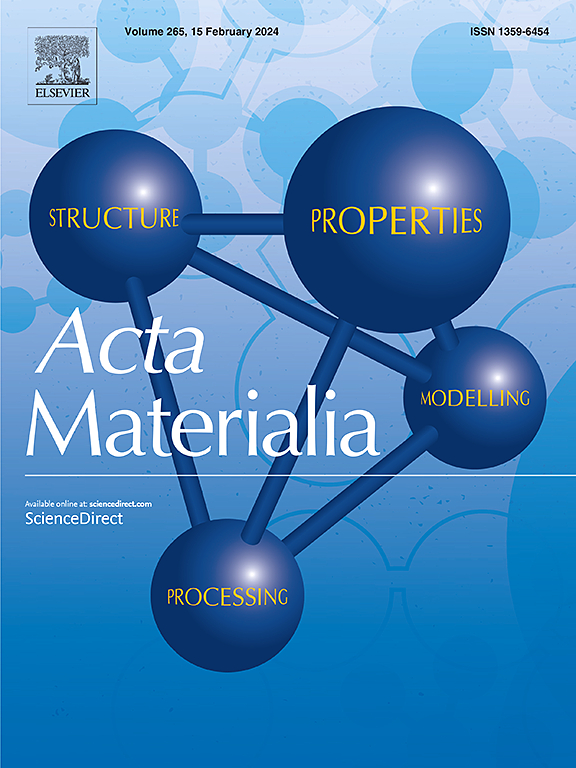镍中应变增强氢偏析和高角度晶界破坏的直接观察
IF 9.3
1区 材料科学
Q1 MATERIALS SCIENCE, MULTIDISCIPLINARY
引用次数: 0
摘要
即使在单元素金属中,理解氢脆的机制仍然很困难。微观组织和应力状态都影响金属和合金中氢的分布,从而影响金属和合金的变形和破坏。在这项工作中,我们使用原位开尔文探针力显微镜(KPFM)在1.1%和3.5%应变下监测纯镍中氢随时间的分布。当应变至3.5%时,氢向高角晶界偏析,而当应变至1.1%时,氢不向高角晶界偏析。光学数字图像相关(DIC)表明,在缺口试样的拉伸测试过程中,充氢会产生局部应变和减小应变。使用原位透射x射线显微镜(TXM)研究了变形和破坏的后期阶段(如微开裂)。TXM揭示了氢环境中裂纹扩展的纳米级结构变化。在靠近主裂纹前缘的晶界处出现局部空洞扩展和二次裂纹。用相关电子后向散射衍射(EBSD)分析了KPFM中晶界开裂与氢偏析的关系。这些发现统一在氢脆机制中,该机制描述了氢与晶界的相互作用,以及晶界在氢脆中的作用。本文章由计算机程序翻译,如有差异,请以英文原文为准。


Direct observation of strain-enhanced hydrogen segregation and failure at high-angle grain boundaries in nickel
Understanding the mechanisms underlying hydrogen embrittlement remains difficult, even in single-element metals. Both microstructure and stress state influence hydrogen distribution in metals and alloys, which impacts deformation and failure. In this work, we use in-situ Kelvin probe force microscopy (KPFM) to monitor the hydrogen distribution in pure nickel over time at 1.1 % and 3.5 % strain. The sample strained to 3.5 % results in preferential hydrogen segregation to high-angle grain boundaries whereas the sample strained to 1.1 % does not exhibit preferential hydrogen segregation. Optical digital image correlation (DIC) shows that hydrogen charging results in both localized and reduced strains during tensile testing of a notched sample. Later stages of deformation and failure (e.g. microcracking) are studied by using in-situ transmission X-ray microscopy (TXM). TXM reveals nanoscale structural changes to a propagating crack in a hydrogen environment. Localized void growth and secondary cracking occur at grain boundaries near the primary crack front. Correlative electron backscattering diffraction (EBSD) is used to relate the cracking at grain boundaries to the hydrogen segregation observed in KPFM. These findings are unified in a proposed hydrogen embrittlement mechanism that describes the interaction of hydrogen with grain boundaries, and the role of grain boundaries in hydrogen embrittlement.
求助全文
通过发布文献求助,成功后即可免费获取论文全文。
去求助
来源期刊

Acta Materialia
工程技术-材料科学:综合
CiteScore
16.10
自引率
8.50%
发文量
801
审稿时长
53 days
期刊介绍:
Acta Materialia serves as a platform for publishing full-length, original papers and commissioned overviews that contribute to a profound understanding of the correlation between the processing, structure, and properties of inorganic materials. The journal seeks papers with high impact potential or those that significantly propel the field forward. The scope includes the atomic and molecular arrangements, chemical and electronic structures, and microstructure of materials, focusing on their mechanical or functional behavior across all length scales, including nanostructures.
 求助内容:
求助内容: 应助结果提醒方式:
应助结果提醒方式:


